Wood accent walls have become the cornerstone of modern interior design, transforming ordinary spaces into captivating focal points. Whether you're drawn to rustic farmhouse charm or sleek contemporary aesthetics, wood offers unmatched versatility and warmth. From reclaimed barn wood that tells stories of yesteryear to precision-cut geometric patterns that speak to modern sensibilities, these natural elements bring texture, depth, and character to any room. The beauty lies in wood's ability to complement virtually any design style while adding that coveted organic touch. With endless possibilities for customization through stain, paint, and installation patterns, wood accent walls deliver both visual impact and lasting value to your home.
1. Horizontal Shiplap Wood Accent Wall

Horizontal shiplap remains the most popular wood accent wall choice, offering timeless appeal with rustic charm. This classic approach features wooden planks installed horizontally with distinctive gaps between each board, creating clean lines that make rooms feel wider and more spacious. The technique originated from ship construction, where overlapping boards provided weather protection. Modern horizontal shiplap combines natural wood texture with sleek edges, perfect for creating a cozy, organic feel while maintaining contemporary sophistication. Installation involves securing each plank to wall studs, ensuring proper spacing for that signature nickel gap appearance. Traditional white or off-white shiplap works beautifully, though modern interpretations embrace various paint colors. This versatile option suits bedrooms, living rooms, and dining spaces, particularly behind headboards or as fireplace surrounds.
2. Vertical Shiplap Wood Accent Wall

Vertical shiplap installation creates height illusion and adds modern flair to traditional wood wall treatments. Unlike horizontal applications, vertical planks draw the eye upward, making ceilings appear taller while adding sophisticated linear interest. Real shiplap boards with rabbeted cuts create authentic nickel gaps, though budget-friendly plywood alternatives achieve similar results. This orientation works exceptionally well in rooms with lower ceilings or narrow spaces that benefit from vertical emphasis. Installation requires careful measurement and leveling to ensure perfectly plumb lines. Vertical wood slats are moving toward more polished, natural finishes rather than dark, rustic appearances. Consider this approach for hallways, bathrooms, or accent walls where you want to create dramatic height perception while maintaining clean, contemporary aesthetics.
3. Reclaimed Barn Wood Accent Wall
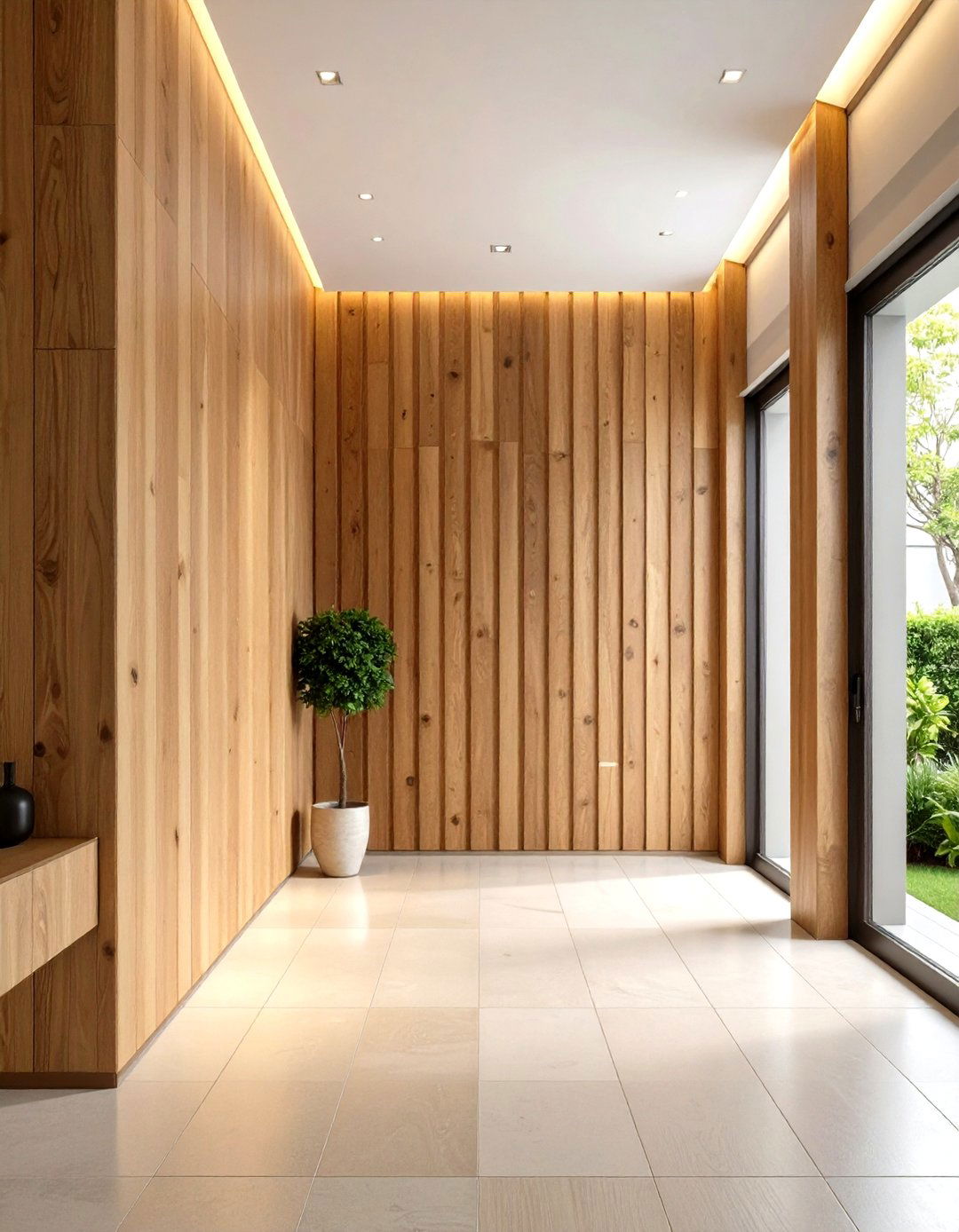
Reclaimed wood walls showcase unique character through visible saw marks, color variations, and mottled surfaces that new lumber cannot replicate. Sourced from century-old barns, these weathered planks bring authentic history and environmental sustainability to modern interiors. Each reclaimed board carries natural patina from aging over time, creating rich character and warmth. The irregular widths and varying tones create organic, lived-in appeal that perfectly complements rustic, farmhouse, or industrial design styles. Quality reclaimed wood is cleaned to remove hazards while preserving original details and authentic weathered appearance. Installation can follow random patterns or organized layouts, depending on desired aesthetic. This sustainable choice doesn't require cutting living trees and offers more energy-efficient processing than new lumber, making it environmentally conscious while delivering unmatched visual appeal.
4. Herringbone Wood Accent Wall

Herringbone patterns create striking focal points using planks arranged in broken, asymmetrical zig-zag formations. This sophisticated technique requires precise measurement and angled cuts, typically at 45-degree angles, to achieve the signature interlocking appearance. Despite complex visual results, herringbone installation proves surprisingly manageable with proper planning and templates. The pattern works beautifully behind headboards, in dining rooms, or as office accent features. Material costs remain reasonable, often under $75 for significant impact, while creating dramatic architectural interest. Success depends on establishing proper center lines and maintaining consistent spacing throughout installation. This classic pattern never goes out of style and adapts well to various wood types and finishes. Consider darker background paint colors to enhance the geometric pattern and create depth between boards.
5. Board and Batten Wood Accent Wall
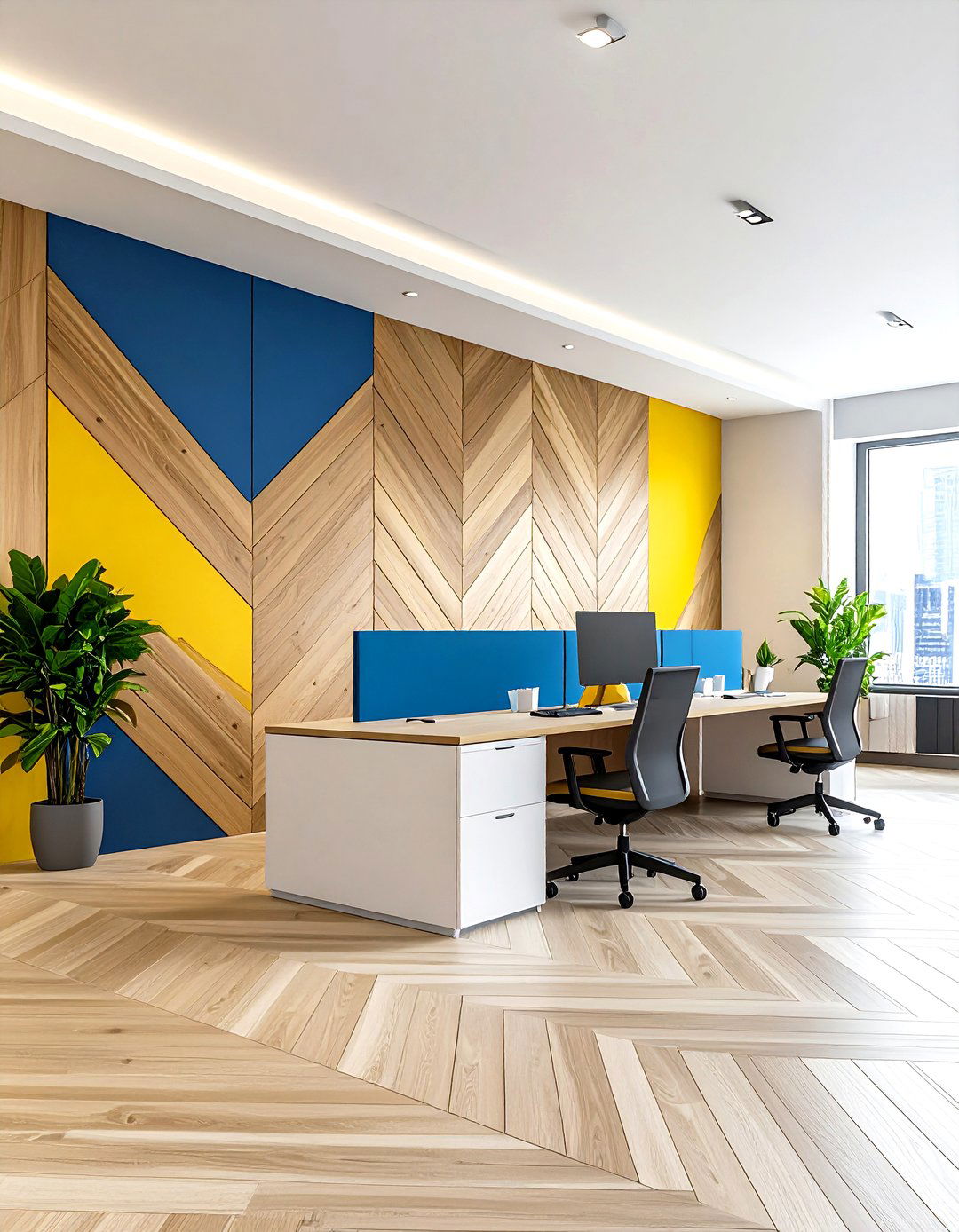
Board and batten installations combine horizontal base boards with vertical battens, creating traditional architectural character. This technique involves installing wider horizontal planks as foundations, then adding narrower vertical strips at regular intervals. The result delivers timeless elegance with architectural depth, making it ideal for wainscoting applications or full-wall treatments. Installation can accommodate existing crown molding by butting vertical boards directly against base and ceiling trim. Typical spacing ranges from 12-20 inches between vertical elements, though wider or narrower intervals create different visual effects. Both cost-effective MDF strips and premium primed pine options work well, depending on budget and time constraints. This versatile approach suits bedrooms, dining rooms, and family spaces where classic design elements enhance overall sophistication.
6. Wood Slat Accent Wall

Wood slat walls feature vertical elements with intentional gaps between pieces, creating modern texture and sophisticated movement. Unlike traditional solid paneling, slat installations emphasize negative space as much as wood surface, producing contemporary architectural interest. These walls create depth and shadow play, especially as lighting angles change throughout the day. Installation involves securing individual slats to wall substrates while maintaining consistent spacing between elements. The vertical orientation brings height and dimension, making them perfect for contemporary dining rooms, offices, or feature walls. Modern trends favor lighter wood finishes in natural tones rather than heavy, dark stains. Background wall colors should contrast with wood tones to maximize visual impact. This technique works particularly well in spaces where you want bold, modern statements without overwhelming existing design elements.
7. Three-Dimensional Wood Accent Wall
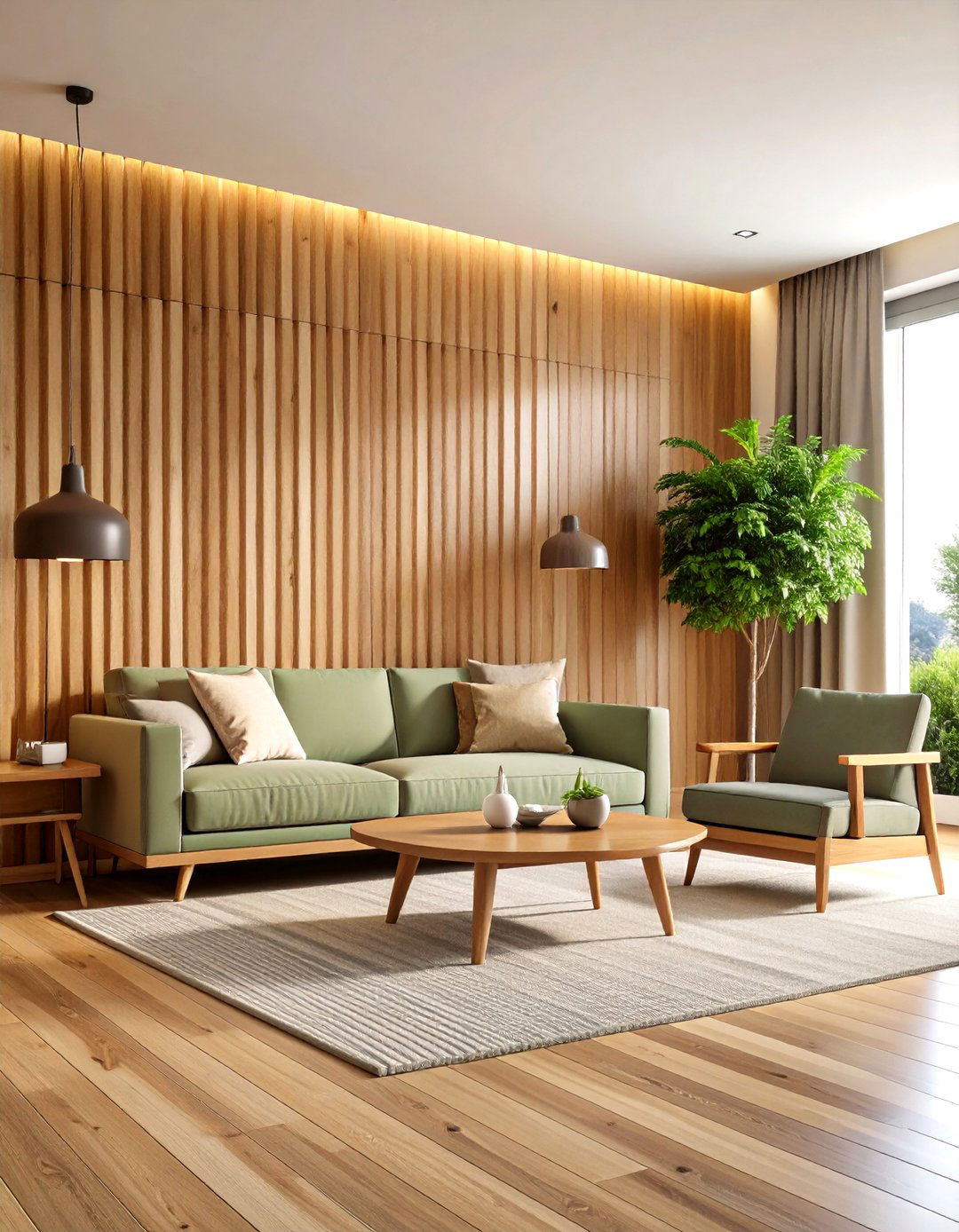
Three-dimensional wood accent walls function almost like sculptural art installations, featuring varying depths and shadow-creating elements. These installations go beyond flat surface applications by incorporating multiple layers, angled pieces, or geometric protrusions that catch and reflect light dynamically. Depending on design complexity, these touchable walls create substantial depth perception and visual interest throughout daily lighting changes. Construction requires careful planning to achieve desired three-dimensional effects while maintaining structural integrity. Various wood thicknesses, angles, and orientations combine to create custom relief patterns. This approach works exceptionally well in modern living rooms or creative office spaces where dramatic focal points enhance overall design. Installation complexity varies significantly based on geometric intricacy, but results deliver unmatched visual sophistication. Consider incorporating accent lighting to emphasize dimensional qualities and shadow play.
8. Painted Wood Accent Wall

Painted wood accent walls offer unlimited color possibilities while maintaining natural texture and dimensional interest. Rather than relying solely on natural wood tones, paint applications allow complete customization to match existing décor schemes. Layering multiple paint colors creates unique, weathered appearances that replicate aged patina effects. Techniques include solid color applications, gradient effects, or distressed finishes that highlight wood grain beneath. Dark colors like matte black create particularly striking results, especially when contrasted with neutral surrounding elements. Bold paint choices work well when balanced with lighter furnishings and adequate natural light. Paint selection should consider room lighting, ceiling height, and overall color palette. Chalk-based or clay paints provide excellent coverage with minimal odor while offering superior adhesion to wood surfaces.
9. Weathered Wood Accent Wall

Weathered wood planks showcase natural aging processes through gray tinting, texture variations, and authentic patina development. These pre-treated boards replicate decades of natural weathering without waiting for environmental exposure. Gray reclaimed wood creates contemporary designs while maintaining organic appeal through natural color variations. Installation follows standard planking techniques while emphasizing irregular placement that highlights each board's unique characteristics. Carbon gray stains help bedrooms feel fresh and contemporary while maintaining warmth and natural appeal. Weathered finishes work particularly well in coastal, modern farmhouse, or industrial design schemes. European plant-based oil finishes provide moisture resistance while preserving natural textures. This approach delivers sophisticated results without artificial distressing techniques, creating authentic aged appearances that enhance rather than compete with surrounding décor elements.
10. Mixed Wood Tone Accent Wall
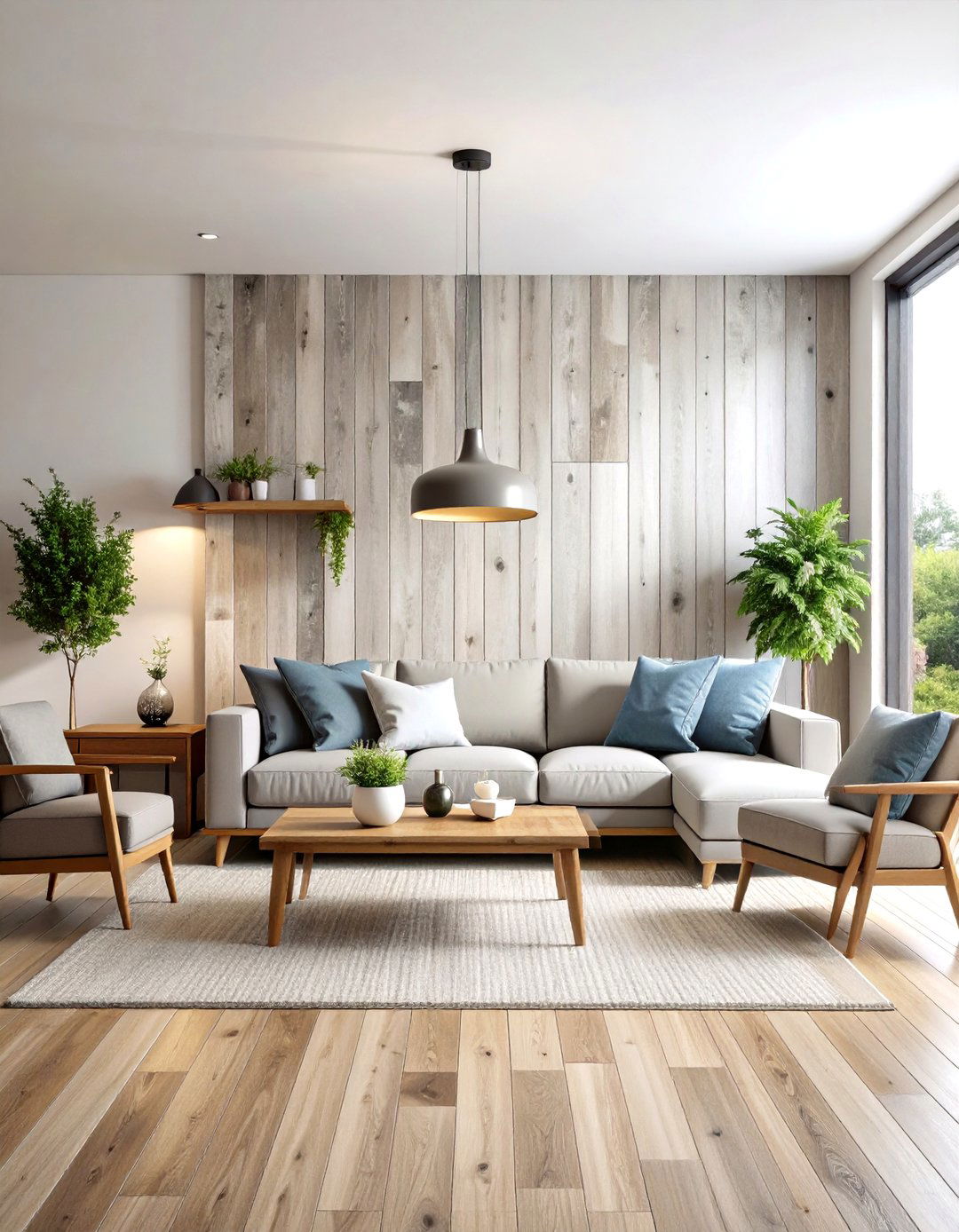
Mixed wood tone installations combine different species or stain colors to create dynamic, layered visual interest. This approach involves selecting complementary wood varieties that work harmoniously while providing tonal contrast and textural variety. Multi-tonal planks can extend floor-to-ceiling, creating better flow and architectural continuity throughout spaces. Installation requires careful planning to achieve balanced distribution of different tones without creating chaotic or overwhelming effects. Successful mixed-tone walls often incorporate weathered grays, natural browns, and lighter honey tones in thoughtful combinations. Consider varying plank widths alongside color differences to enhance visual complexity. The intersecting diagonal placement adds additional interest layers beyond basic color variation. This technique works exceptionally well in spaces where you want sophisticated character without relying on single-tone uniformity.
11. Geometric Pattern Wood Accent Wall
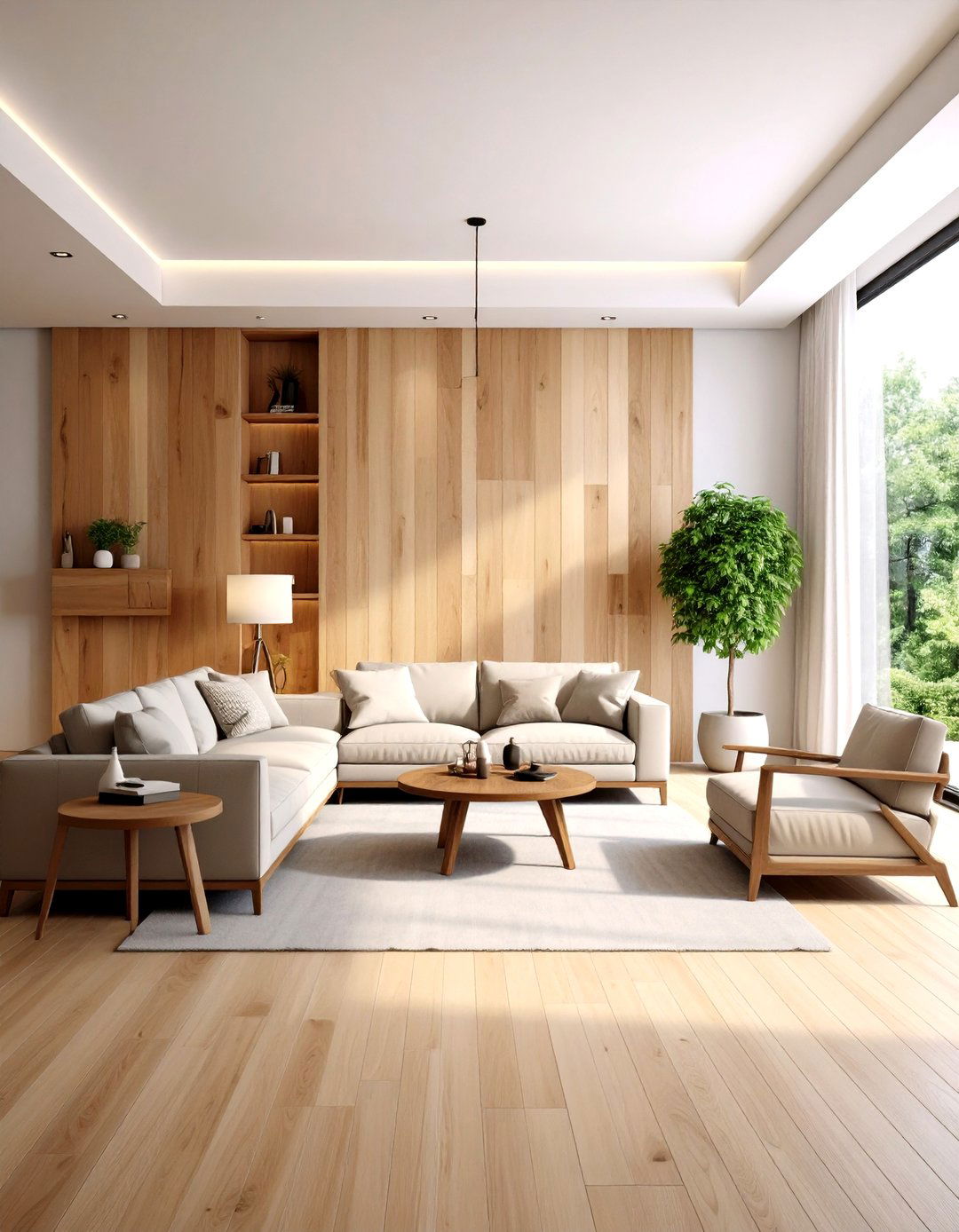
Geometric wood installations combine traditional materials with precise patterns to create modern architectural statements. Beyond basic herringbone applications, geometric approaches include diamond patterns, chevron designs, hexagonal arrangements, or custom angular compositions. These patterns offer precise, modern edges that suit contemporary interior styles while maintaining natural wood warmth. Successful geometric installations require detailed planning, accurate measurements, and consistent execution to achieve crisp, professional results. Various wood species or stain colors can enhance pattern definition and visual impact. Custom geometric patterns allow homeowners to create truly unique focal points that reflect personal style preferences. Installation complexity increases with pattern intricacy, but results deliver unmatched visual sophistication. Consider incorporating different wood thicknesses to add dimensional qualities alongside geometric interest.
12. Wood Panel Grid Accent Wall
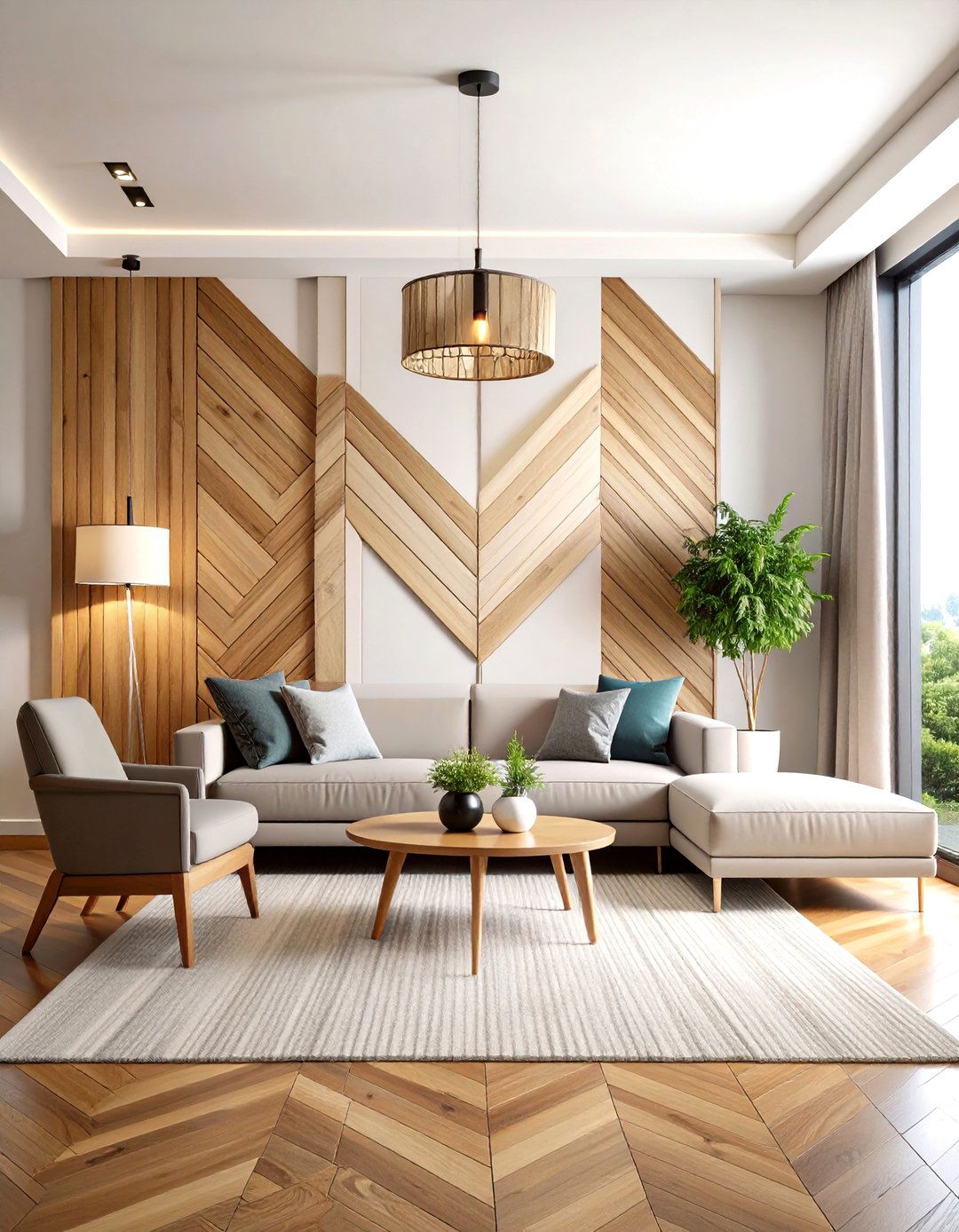
Wood panel grids create sophisticated, modern industrial aesthetics through systematic rectangular or square arrangements. This approach involves creating uniform panel sections separated by consistent spacing, resulting in clean, organized visual patterns. Smooth cedar panels arranged in grid formations deliver contemporary styling while maintaining natural wood warmth. Installation requires precise measurement to ensure uniform panel dimensions and consistent spacing throughout the wall surface. Grid patterns work particularly well in office spaces, modern bedrooms, or contemporary living areas where organized design elements enhance overall sophistication. Frame materials can match panel wood or provide contrasting colors for enhanced definition. Panel installations can incorporate integrated shelving or functional elements within grid frameworks. This technique balances natural materials with geometric precision, creating focal points that feel both organic and architecturally intentional.
13. Rustic Cedar Wood Accent Wall

Cedar wood accent walls provide natural beauty through distinctive grain patterns, aromatic qualities, and inherent weather resistance. Cedar's natural oils offer built-in protection against moisture and insects while delivering beautiful color variations from pale yellows to rich reddish-browns. Cozy, natural cedar textures work exceptionally well in bathroom applications or spaces requiring moisture-resistant materials. Installation can emphasize natural edge variations or create uniform, refined appearances depending on processing choices. Rough cedar boards can be cleaned and prepared to ensure bug-free installation while maintaining authentic character. Cedar's natural fragrance adds sensory appeal alongside visual interest. The sustainable choice of repurposing existing cedar materials provides environmental benefits while delivering unique character that new lumber cannot match. This option works particularly well in cabin-style homes, rustic bathrooms, or bedrooms seeking natural tranquility.
14. Diagonal Wood Accent Wall
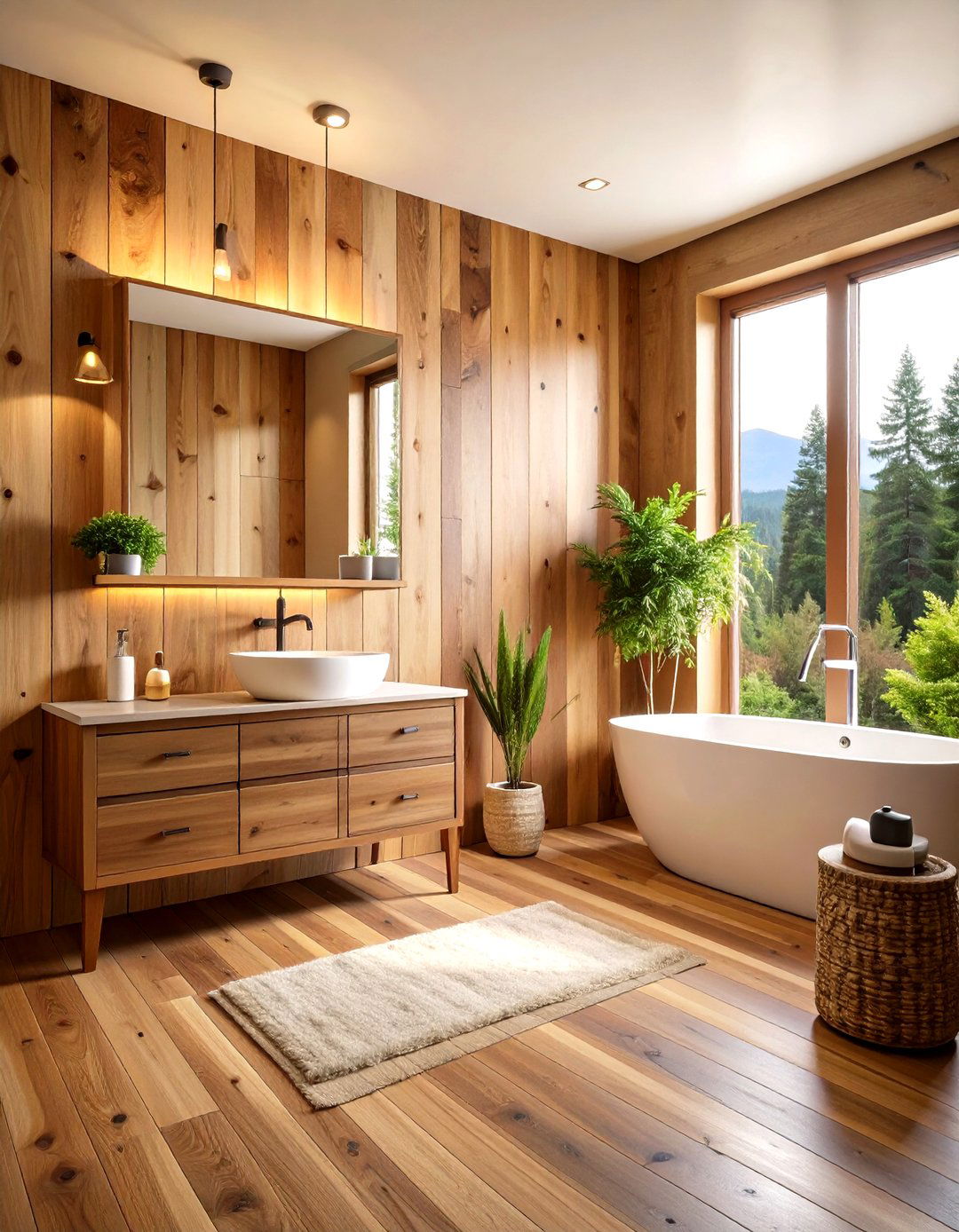
Diagonal wood installations create dynamic movement and visual energy through angled plank arrangements. Unlike horizontal or vertical orientations, diagonal patterns draw attention through unexpected directional flow that energizes space perception. Staggered diagonal placement creates organic, natural feelings while highlighting wood imperfections and color variations. Installation requires careful angle planning to ensure consistent diagonal lines throughout the wall surface. Combining diagonal arrangements with other trends like geometric patterns or multiple wood species creates sophisticated layered effects. Diagonal orientations work particularly well in spaces where traditional horizontal or vertical lines might feel static or predictable. Consider 30 or 45-degree angles for optimal visual impact. This technique suits modern spaces where dynamic energy enhances overall design goals. Background colors should complement rather than compete with diagonal wood patterns.
15. Tongue and Groove Wood Accent Wall
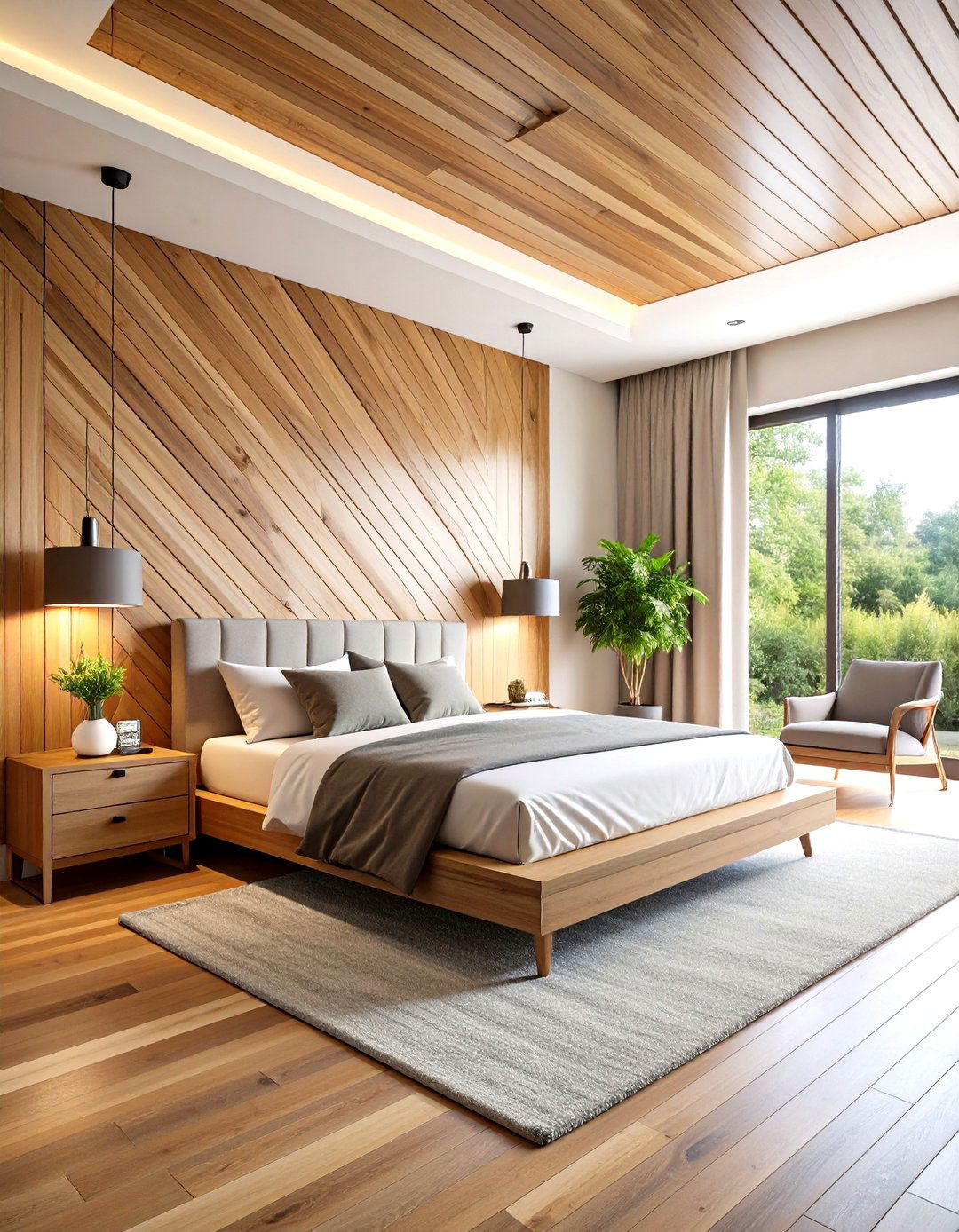
Tongue and groove installations create seamless wood surfaces through interlocking board connections that eliminate visible gaps. This traditional joinery technique produces smooth, continuous wall surfaces while maintaining natural wood character and texture. Both standard assembly and tongue-and-groove options bring reclaimed wood beauty while offering different aesthetic approaches. Installation requires precise board alignment to ensure proper interlocking connections throughout the wall surface. Tongue and groove systems work particularly well where smooth, finished appearances are desired without the rustic gap characteristics of shiplap applications. This technique provides similar visual appeal to shiplap while creating more unified surface appearances. Various wood species work well with tongue and groove systems, from premium hardwoods to budget-friendly pine options. Consider this approach for bedrooms, offices, or formal spaces where refined wood character enhances sophisticated design goals.
16. Wood Mosaic Accent Wall

Wood mosaic installations combine various wood textures, patterns, and styles to create unique, artistic wall treatments. This approach involves arranging different wood pieces in intentionally varied patterns that create visual complexity and artistic interest. Custom mosaic designs can incorporate varying wood thicknesses, species, and finishes to achieve personalized artistic effects. Installation requires creative planning to balance different elements while maintaining overall cohesion and visual appeal. Different wood types can be combined effectively when they share common characteristics or complementary color tones. Mosaic approaches work exceptionally well where unique, conversation-starting focal points are desired. These installations add visual appeal and distinctive character that reflects personal creativity and style preferences. Consider incorporating reclaimed materials alongside new wood for enhanced textural variety and environmental consciousness.
17. Stained Wood Accent Wall
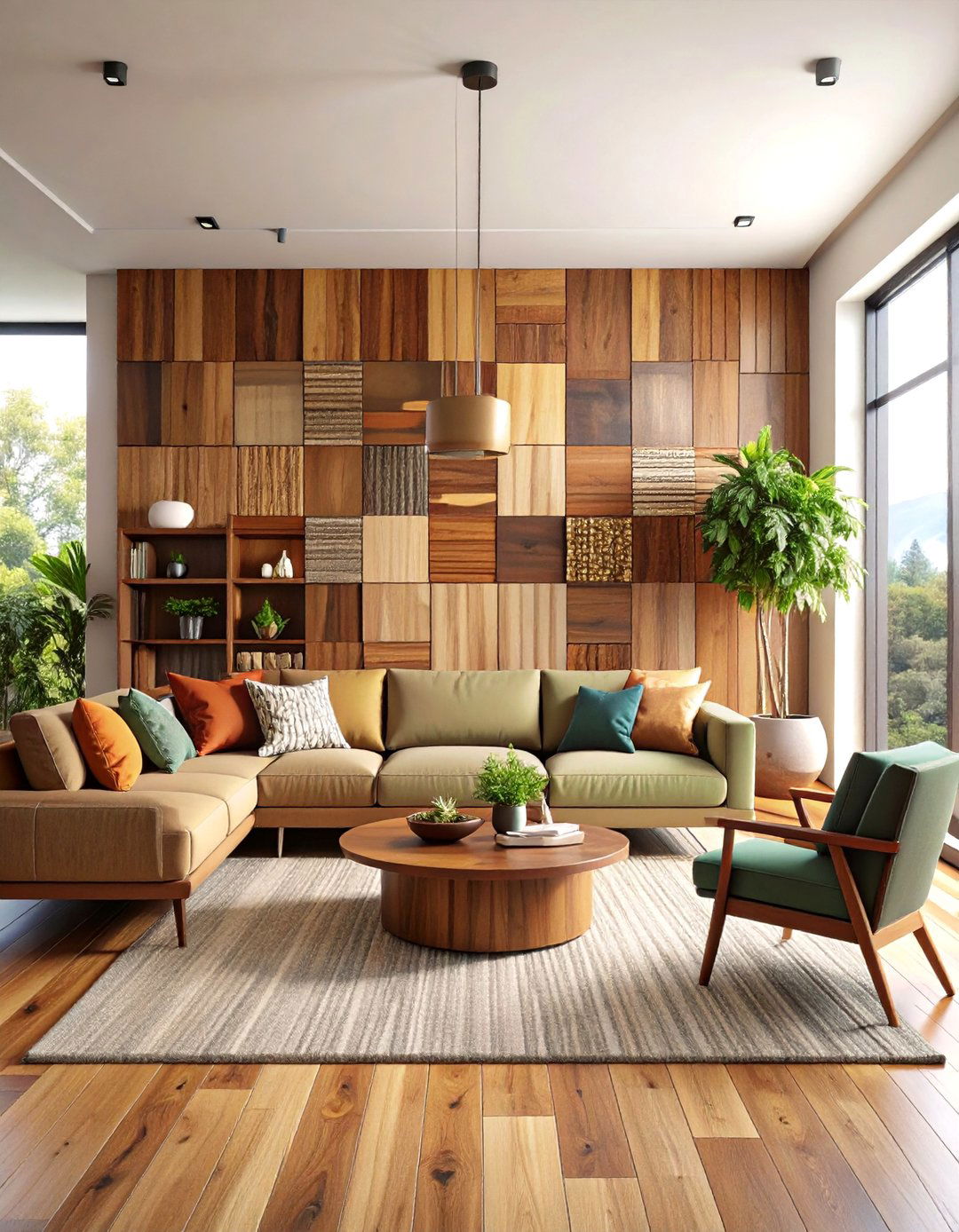
Stained wood accent walls enhance natural grain patterns while introducing custom color tones that complement existing décor schemes. Professional staining techniques can achieve dramatic color transformations while preserving wood's natural texture and character. Rich black staining creates masculine, sophisticated appearances that work particularly well in midcentury modern or contemporary settings. Multiple stain applications can create graduated color effects or highlight specific grain characteristics. Lighter wood stains in oak and ash create contemporary appeal while showcasing natural grain patterns. Stain selection should consider lighting conditions, room size, and overall color coordination with existing furnishings. Dark brown stains create waterfall effects when extended across connecting surfaces like ceilings. Proper surface preparation ensures even stain absorption and professional-quality results that enhance rather than obscure natural wood beauty.
18. Peel-and-Stick Wood Accent Wall

Peel-and-stick wood planks provide convenient installation options for renters or DIY beginners seeking wood accent walls without permanent modifications. These innovative products combine authentic wood veneers with adhesive backing systems that simplify installation while delivering genuine wood appearance and texture. Industrial-strength adhesive strips make installation effortless while creating affordable alternatives to traditional stick wood products. Various wood species and finishes are available in peel-and-stick formats, from rustic barn wood to contemporary smooth finishes. Whether seeking rustic, minimalistic, glossy, or matte appearances, peel-and-stick options accommodate diverse style preferences and budget requirements. Installation requires clean, smooth wall surfaces for optimal adhesion and longevity. Made in America options ensure quality control while supporting domestic manufacturing. This approach suits temporary applications or budget-conscious projects where traditional installation methods might be impractical.
19. Wood Wainscoting Accent Wall
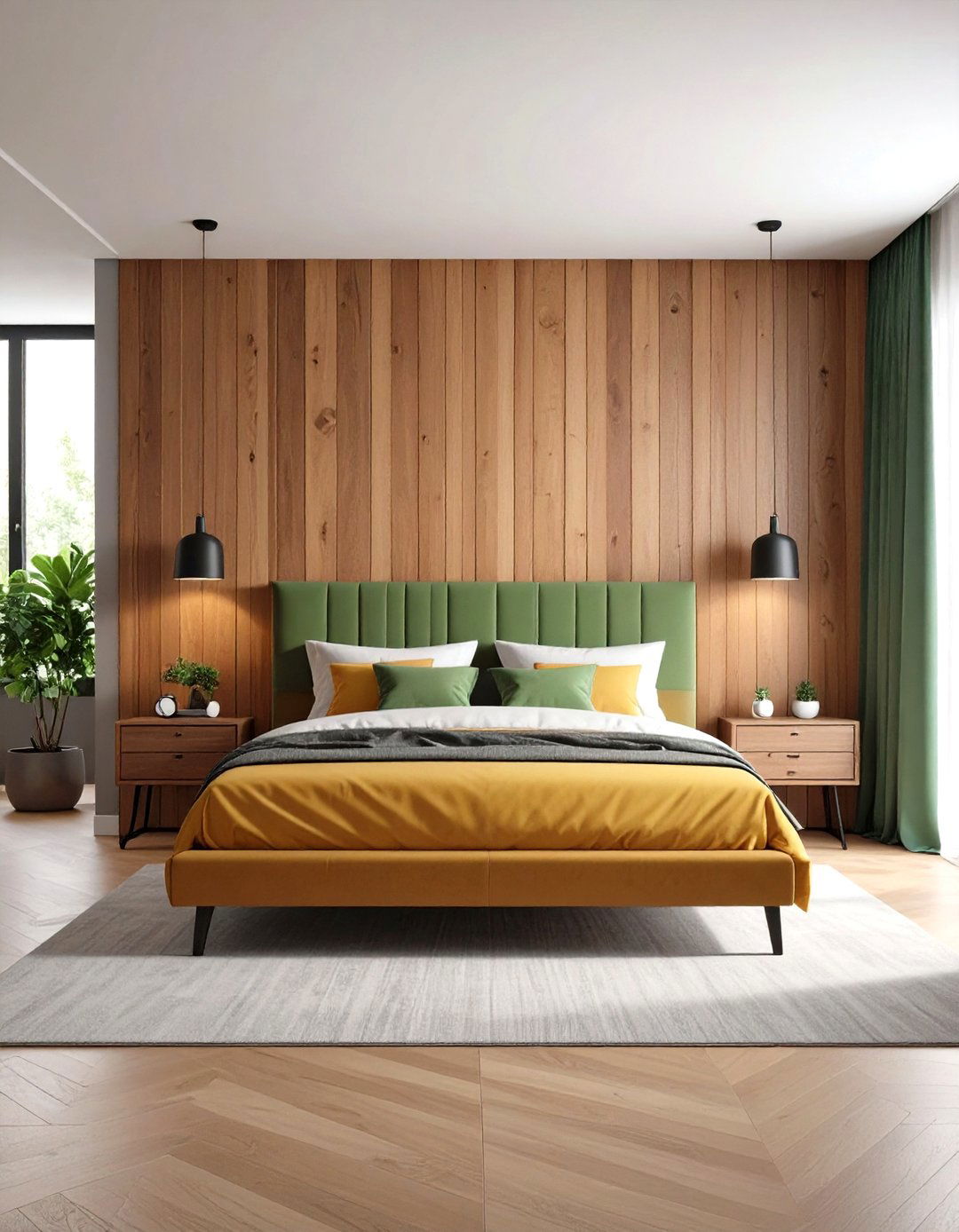
Wood wainscoting creates elegant accent treatments through lower wall paneling that adds texture while maintaining sophisticated restraint. Traditional wainscoting extends approximately halfway up wall heights, creating visual interest without overwhelming room proportions. Board and batten wainscoting provides timeless elegance with architectural depth, offering easy DIY solutions through pre-cut material kits. Installation involves careful measurement to ensure consistent heights and proper proportion relationships with ceiling and floor lines. Typical wainscoting heights range from 3-4 feet, though adjustments accommodate room-specific proportions and design goals. Various wood species work well for wainscoting applications, from traditional oak to budget-friendly MDF alternatives. Painted wainscoting can utilize bold colors like dark green or black for character without dramatic overwhelming effects. This approach suits dining rooms, bedrooms, or hallways where classic architectural details enhance overall sophistication.
20. Live Edge Wood Accent Wall

Live edge wood installations preserve natural tree contours and bark characteristics, creating organic accent walls that celebrate nature's authentic forms. This approach emphasizes wood's natural beauty through minimal processing that maintains original edge irregularities and unique grain patterns. Live edge applications can extend existing design themes like butcher block countertops up wall surfaces for cohesive natural backsplash effects. Installation requires creative mounting solutions that accommodate irregular shapes while ensuring structural stability. Natural stone elements often complement live edge wood through shared organic characteristics and warm color tones. Live edge installations work particularly well in rustic, modern farmhouse, or contemporary organic design schemes where natural materials take center stage. These installations can incorporate functional elements like integrated shelving within natural wood forms. Consider this approach where unique, artistic focal points that celebrate natural beauty enhance overall design authenticity.
Conclusion:
Wood accent walls transform ordinary spaces into extraordinary focal points that blend natural beauty with design sophistication. From classic shiplap's timeless appeal to innovative three-dimensional installations, these twenty ideas offer something for every style preference and skill level. Modern trends favor lighter, more natural finishes while embracing geometric patterns and textural variety. Whether you choose reclaimed materials for environmental consciousness or opt for convenient peel-and-stick solutions, wood accent walls deliver lasting value and visual impact. The key lies in selecting approaches that complement your existing décor while expressing personal style. With proper planning and execution, these natural elements will enhance your home's character for years to come.


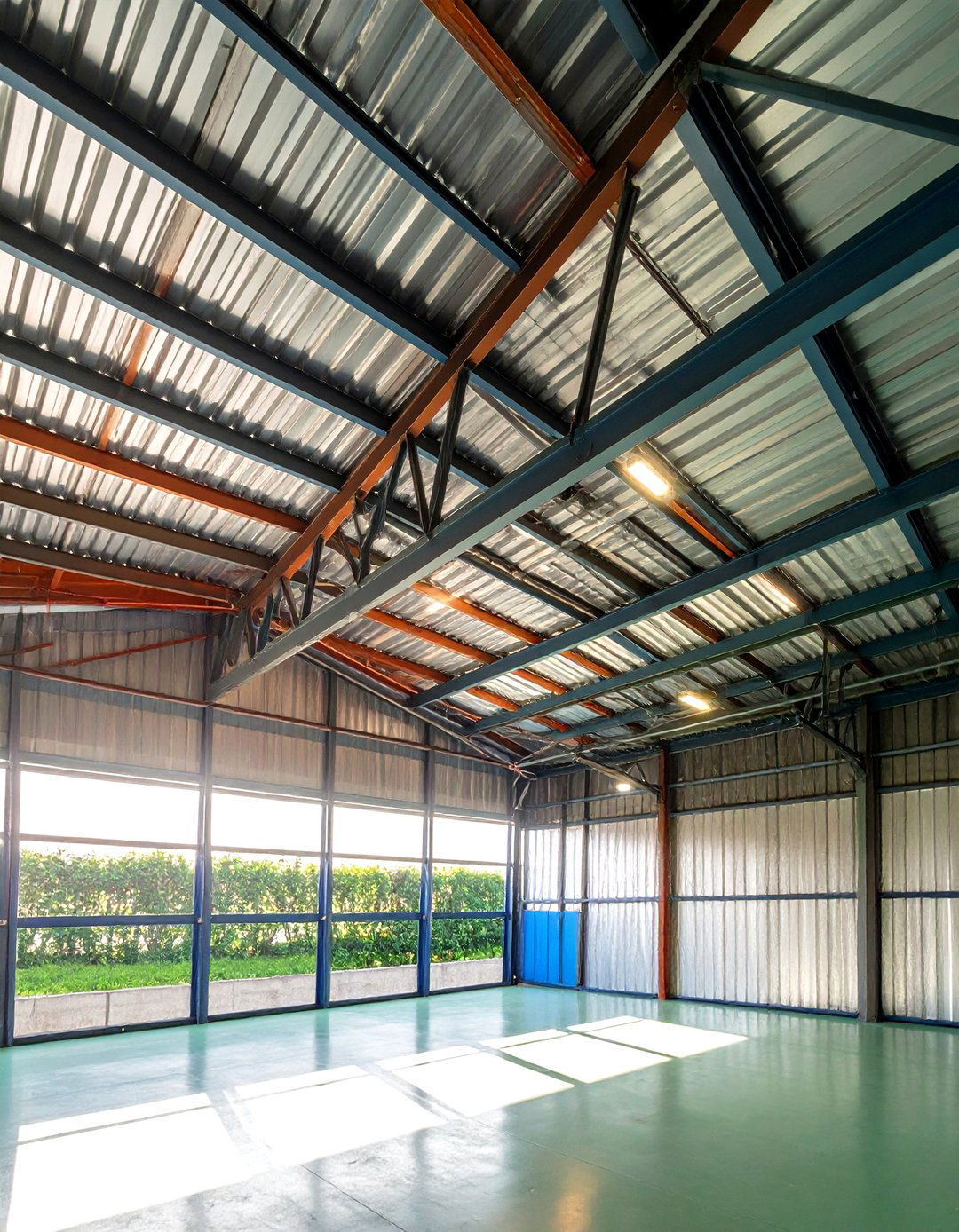
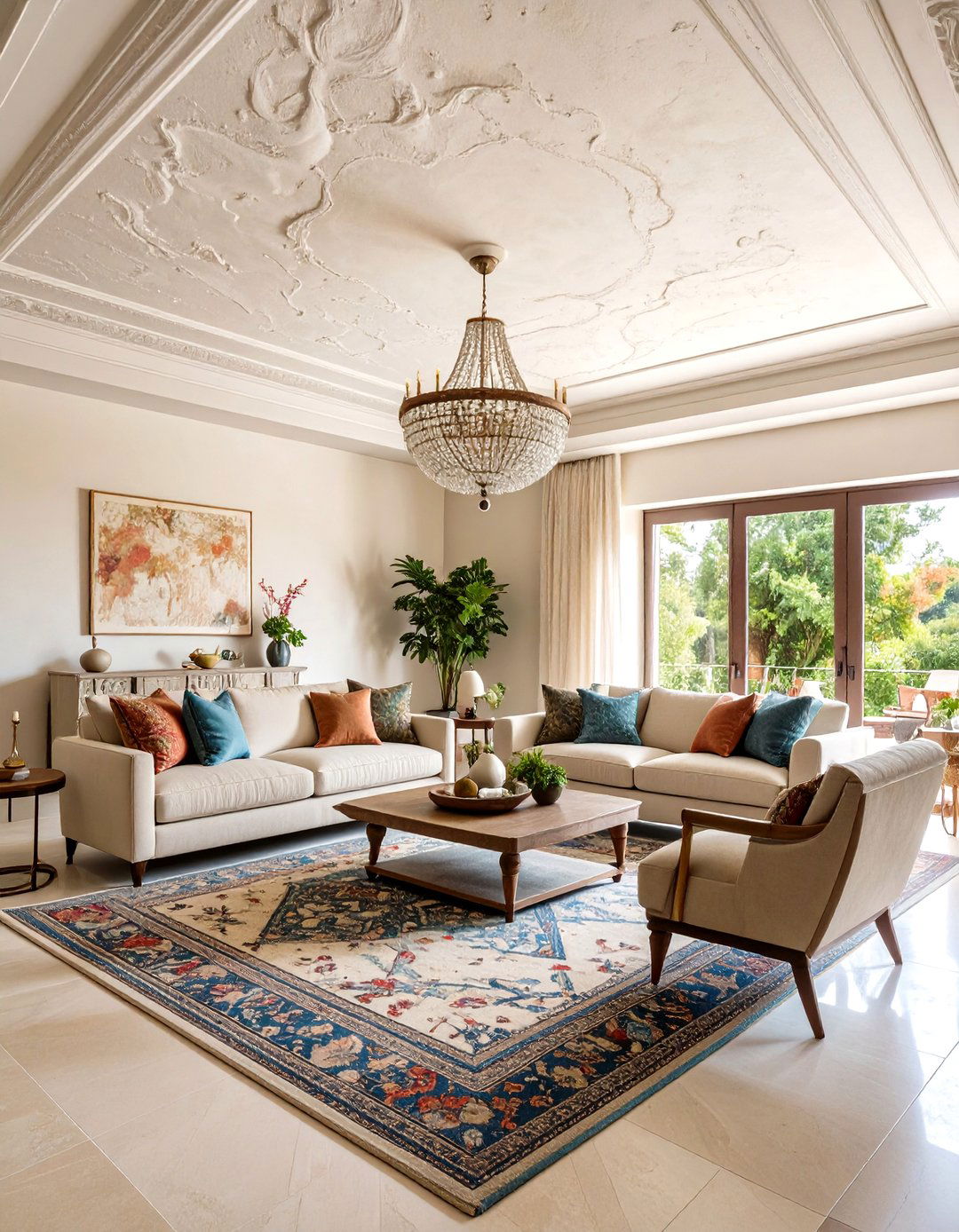
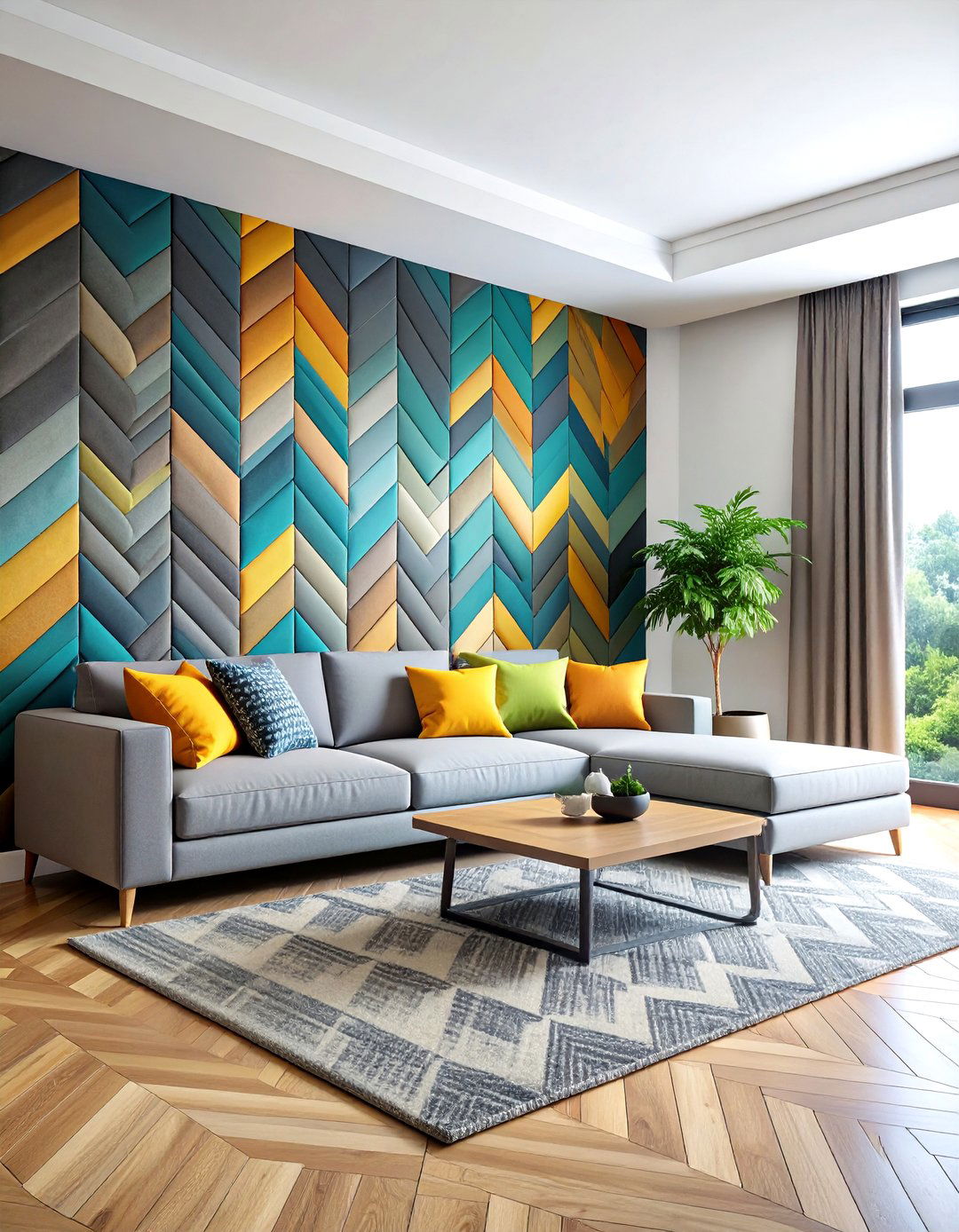

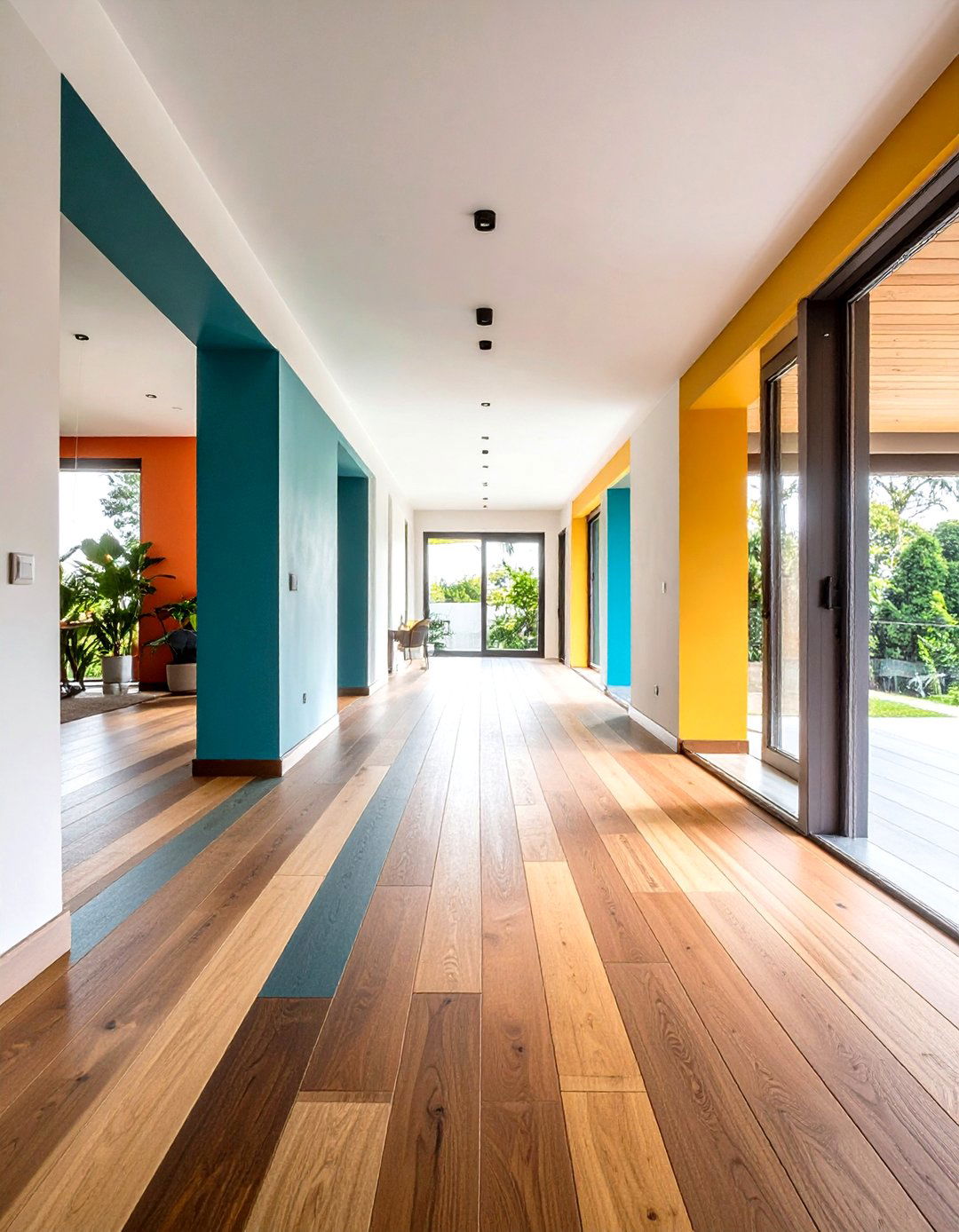
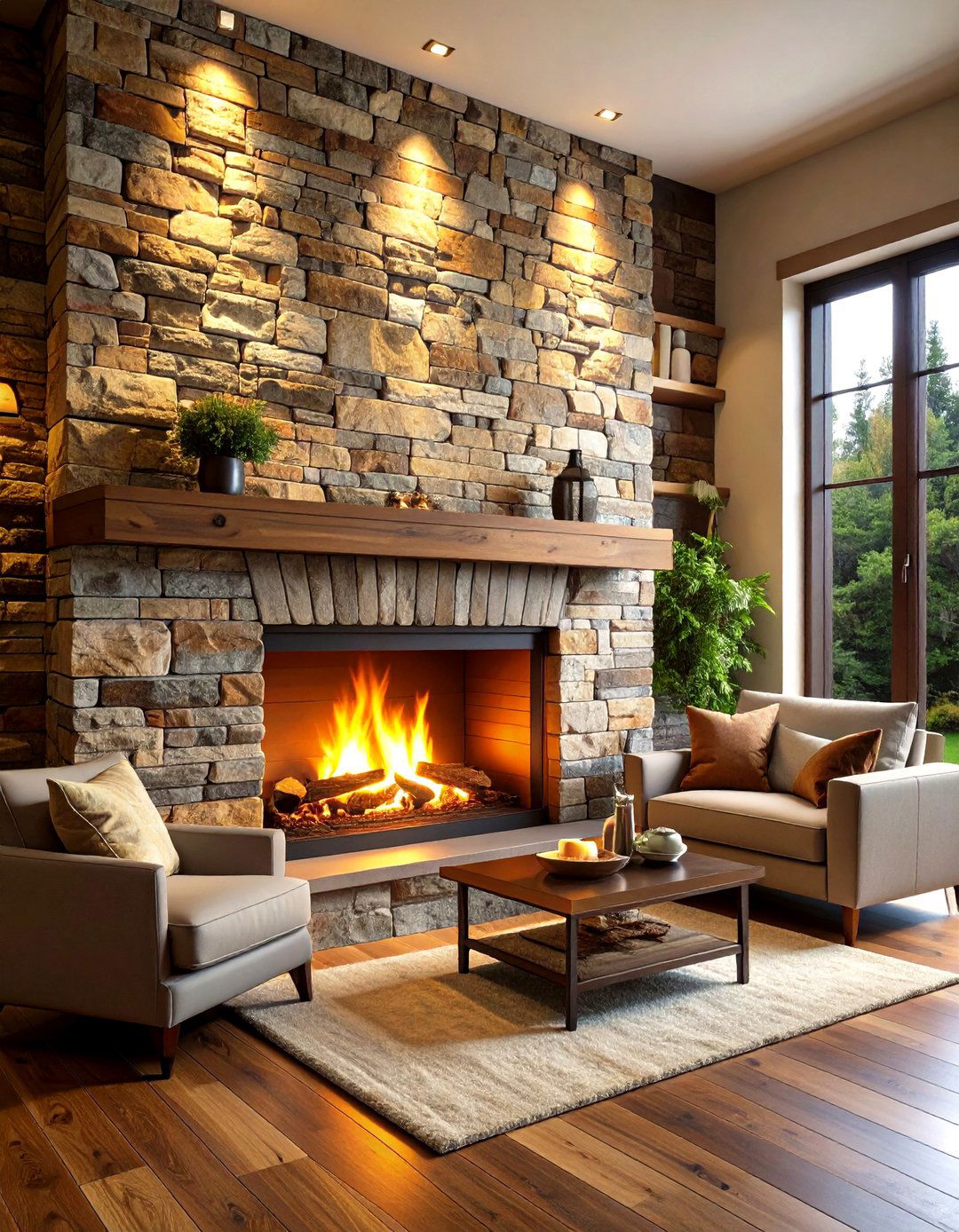
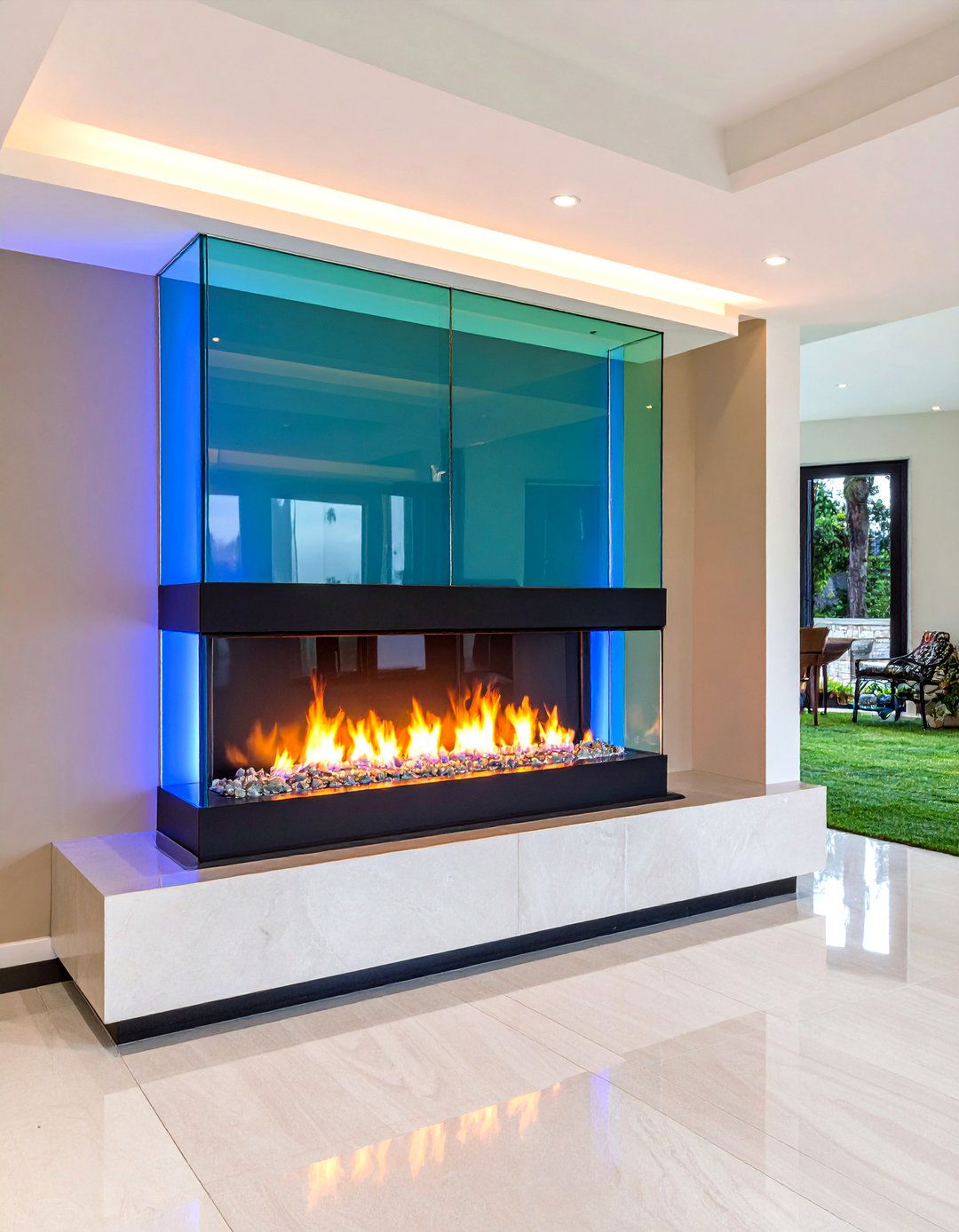
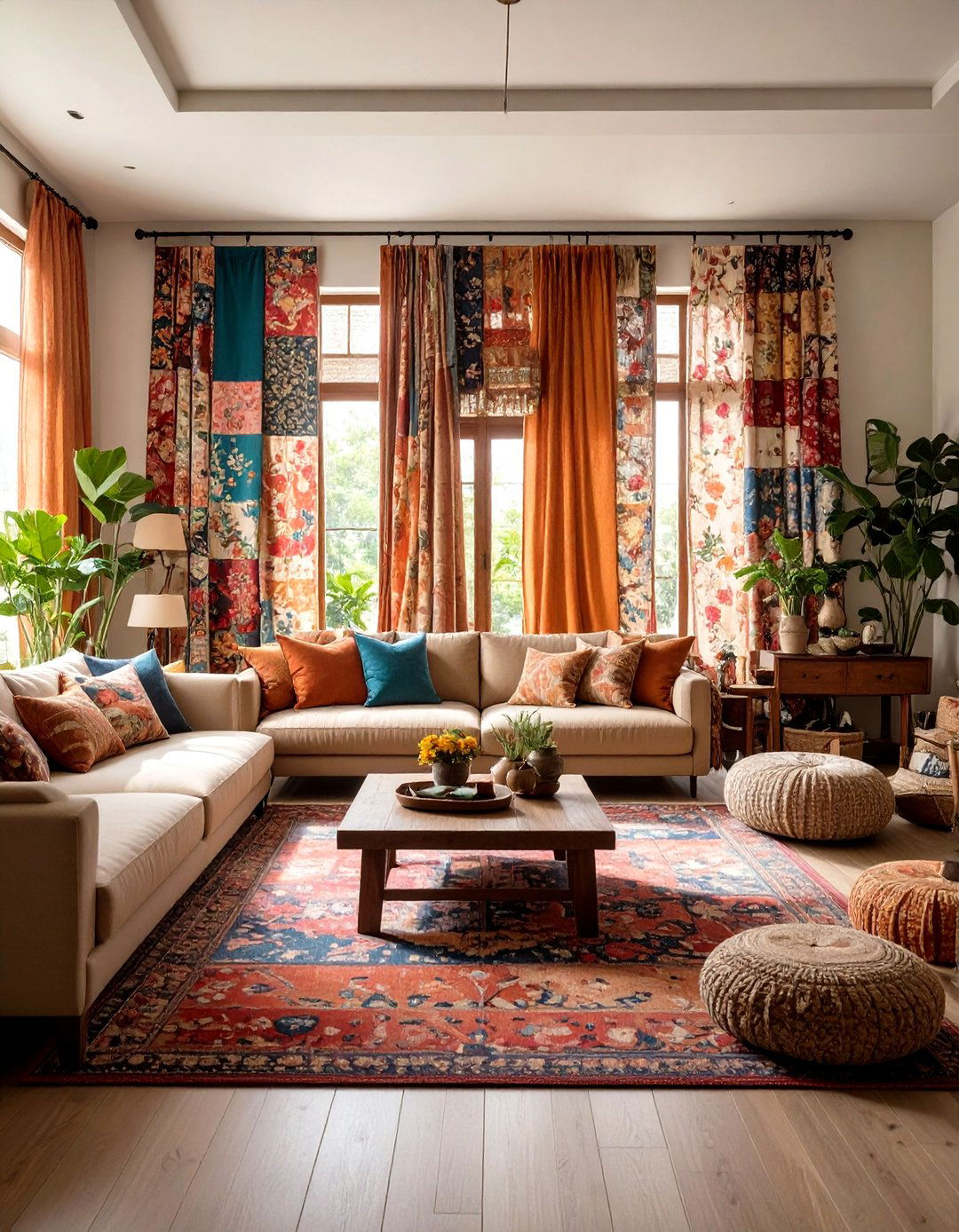
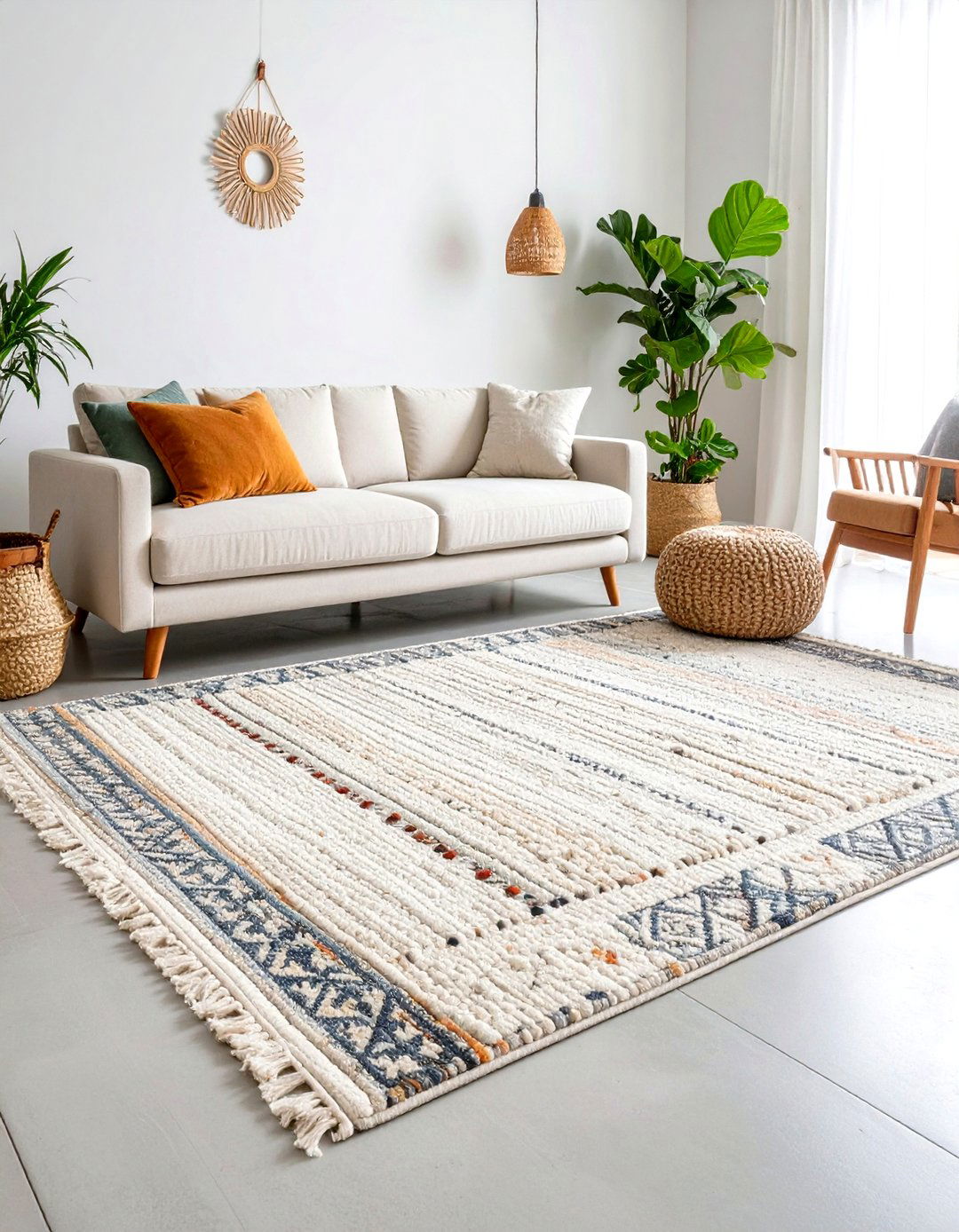
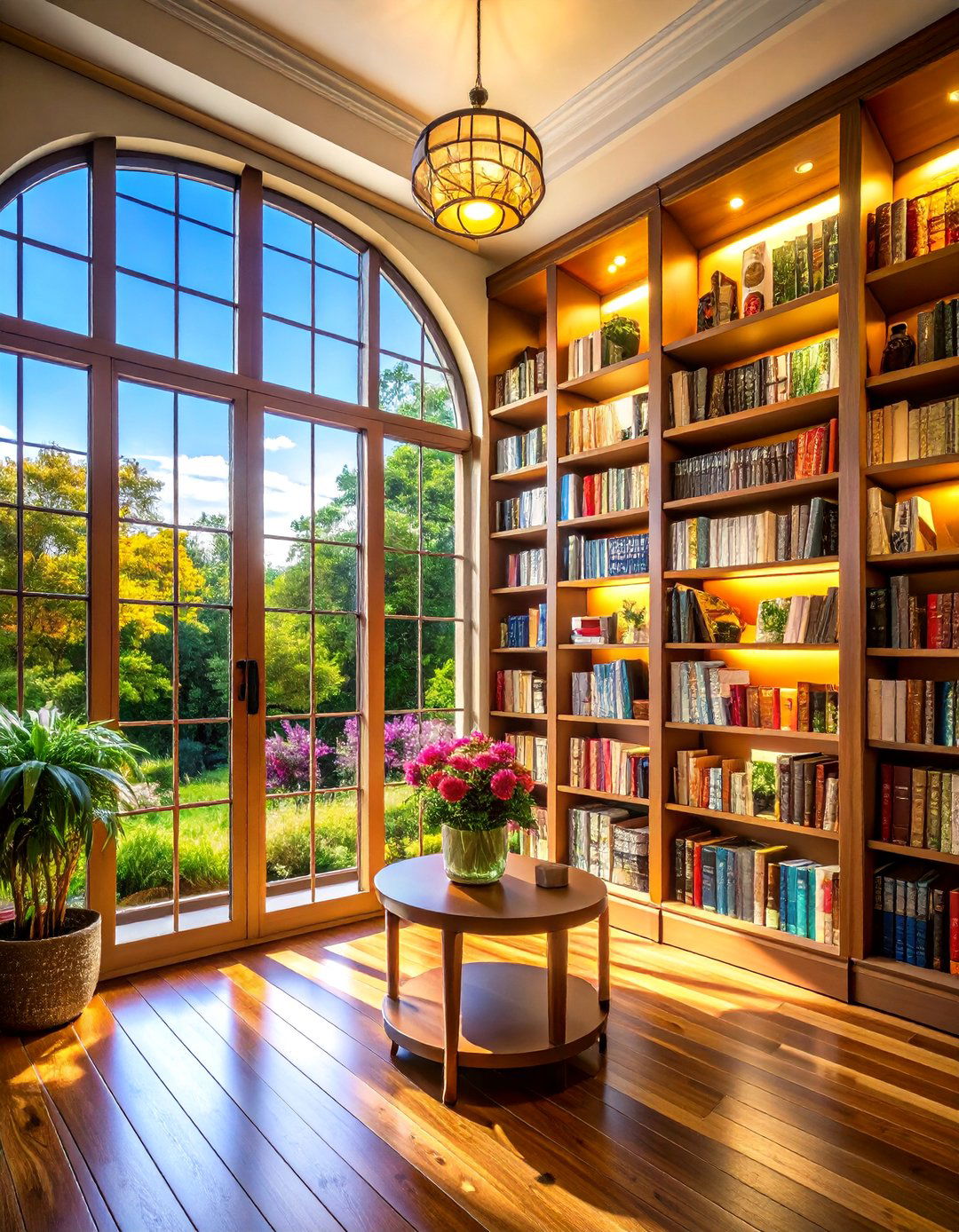
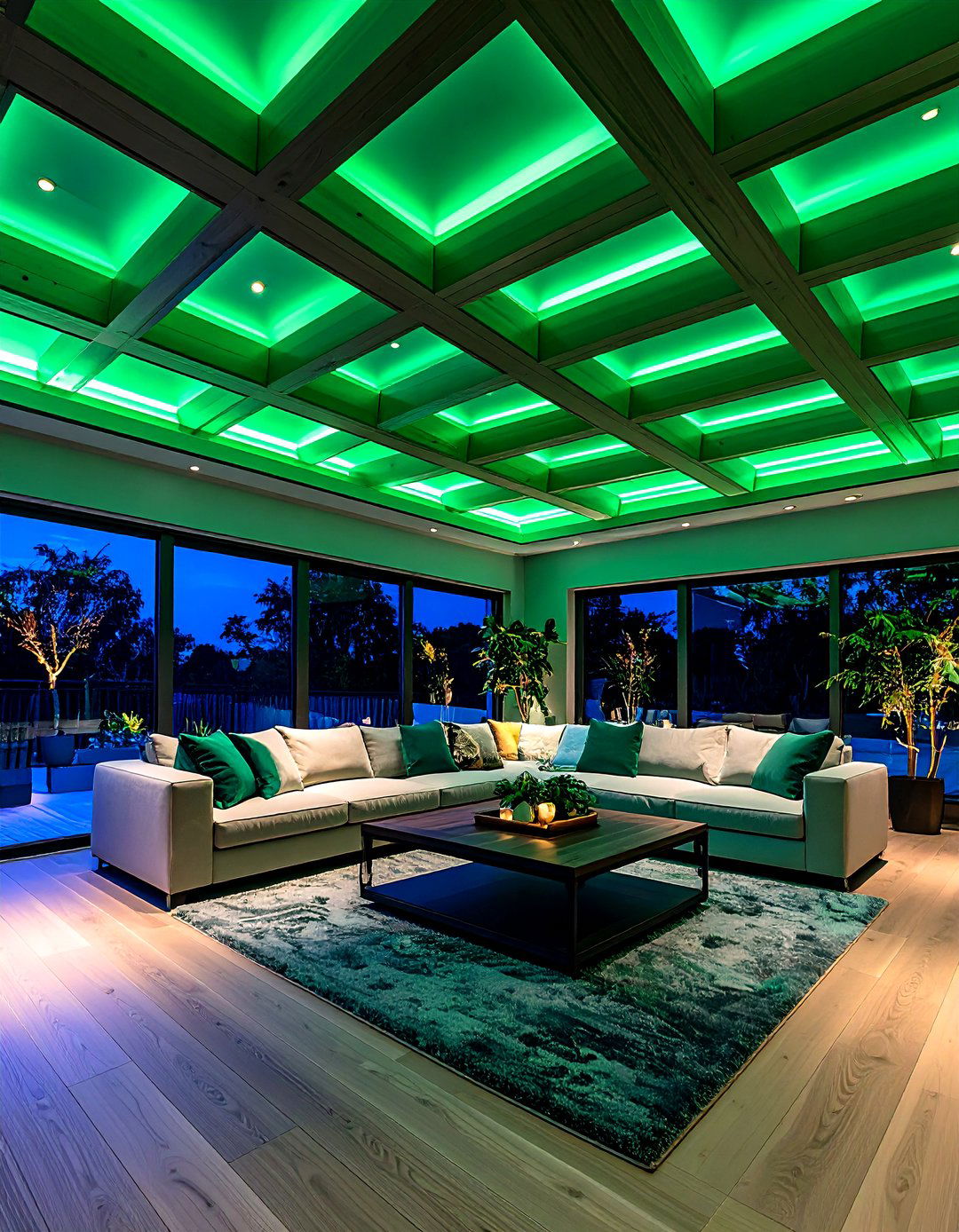
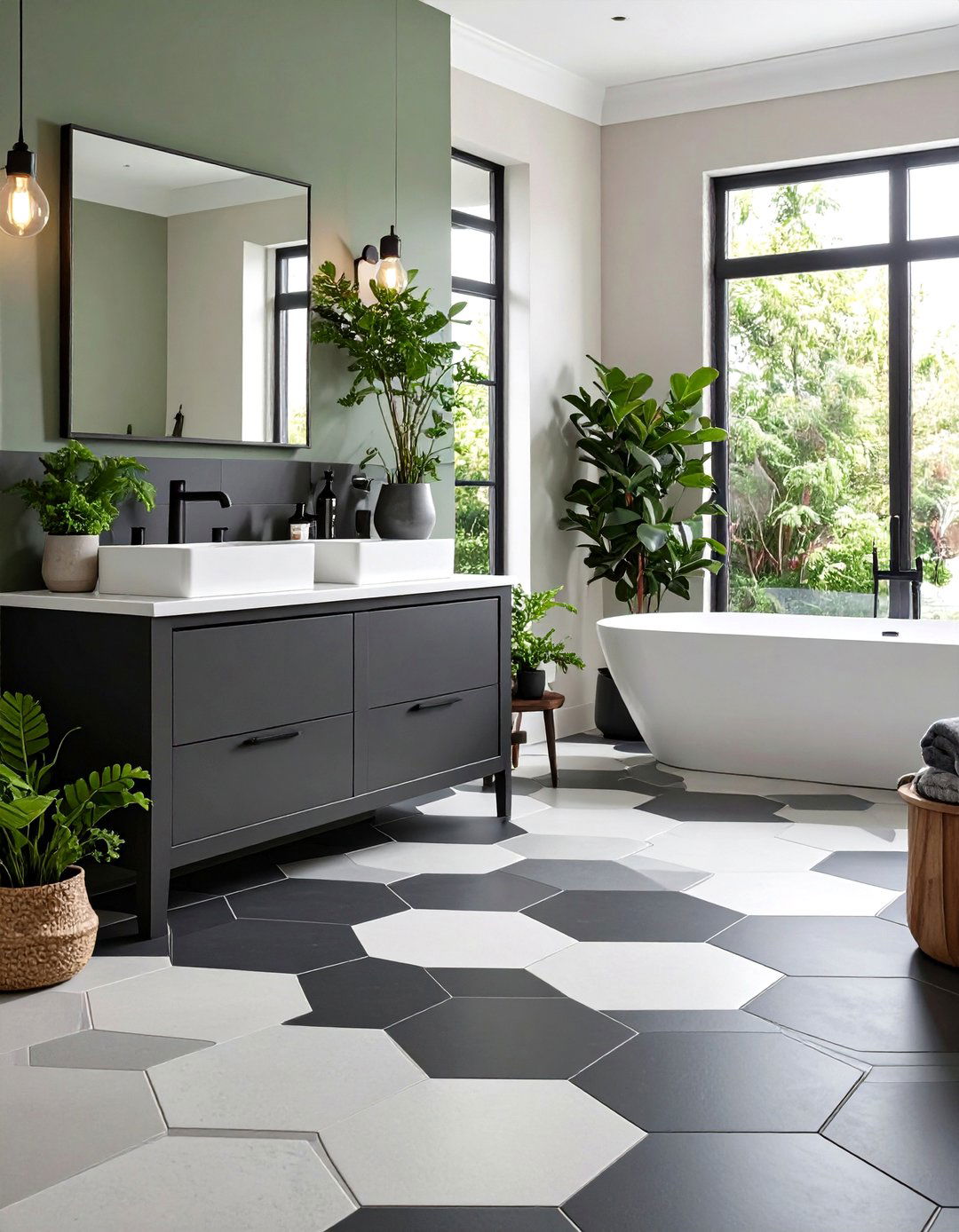
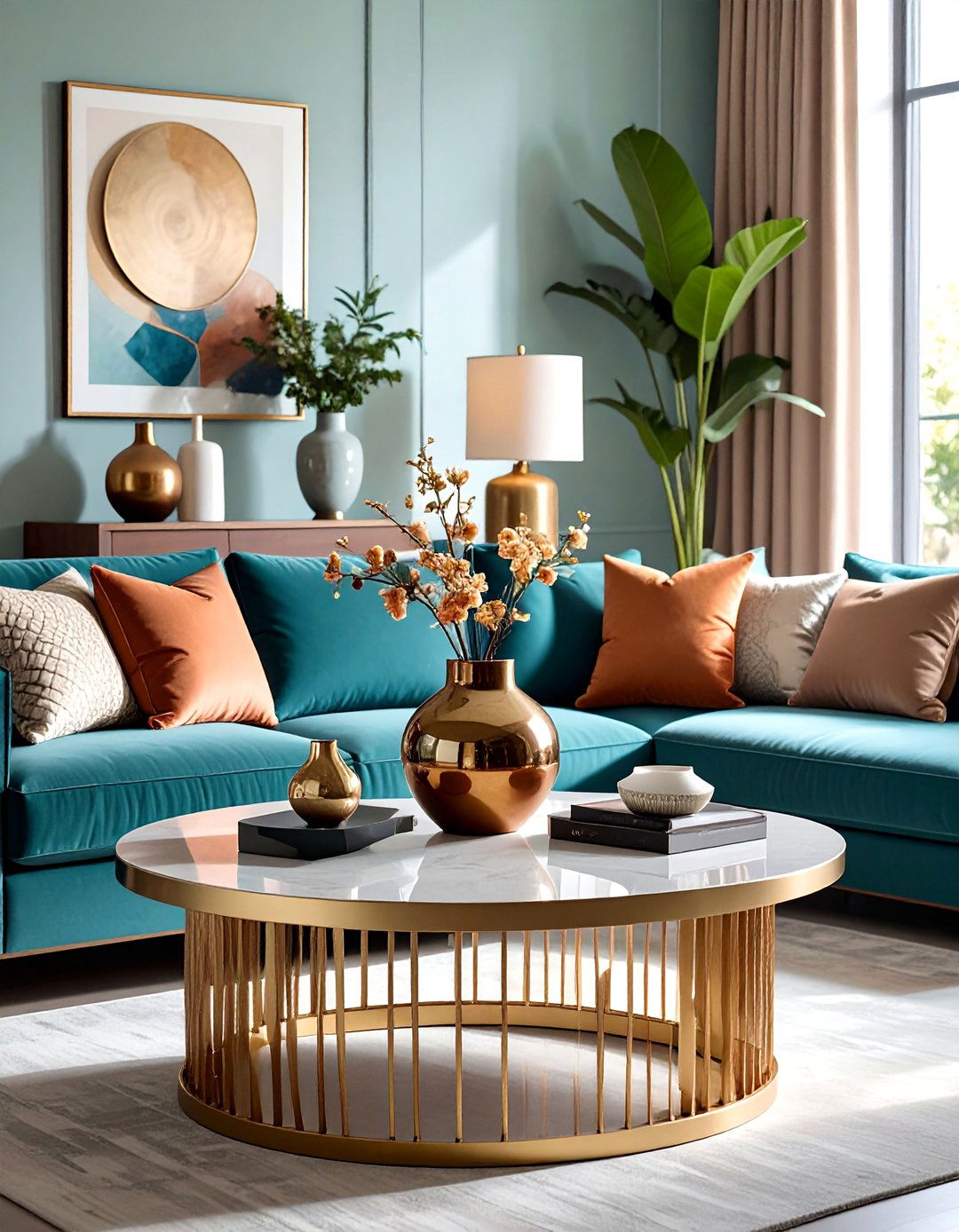
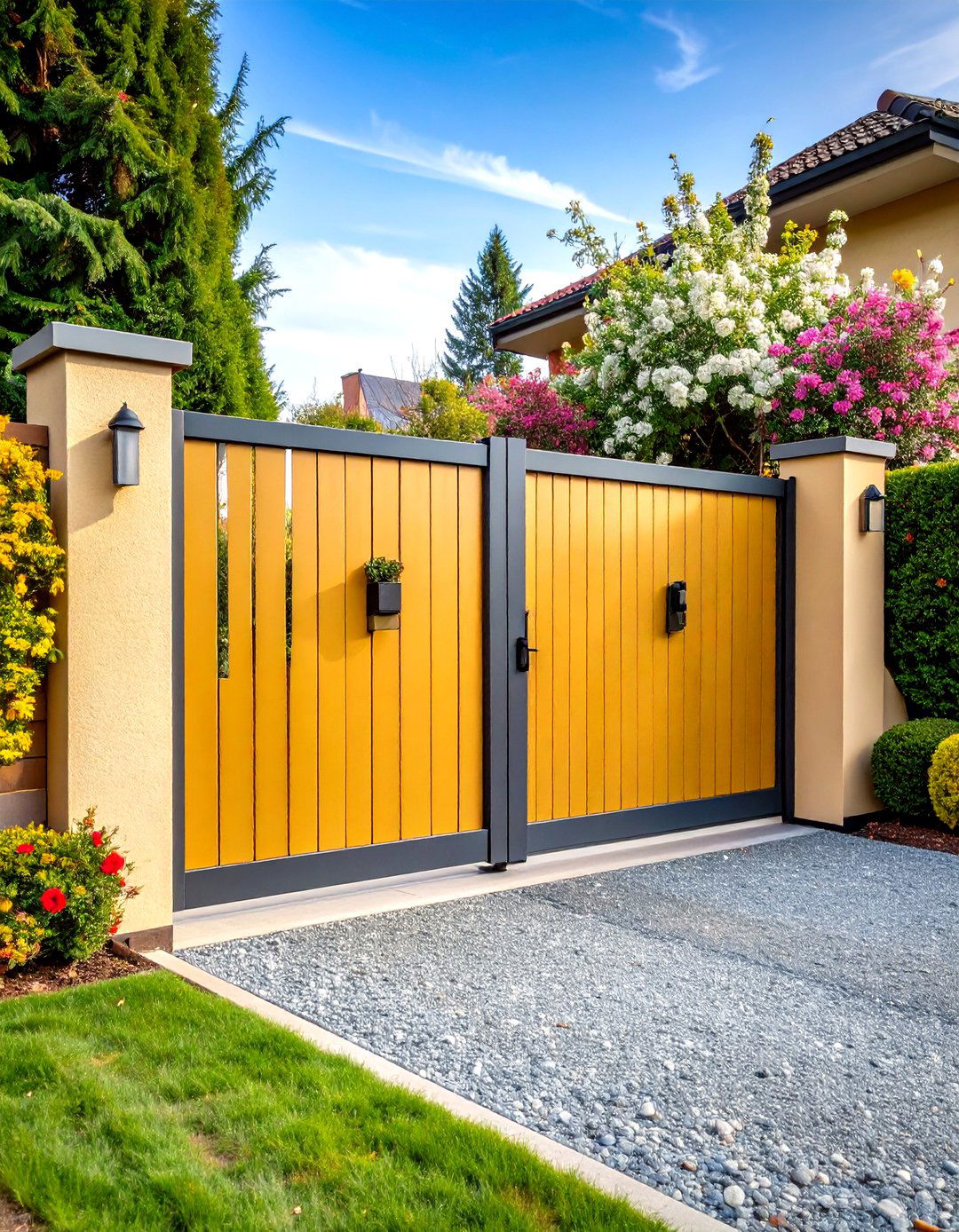

Leave a Reply